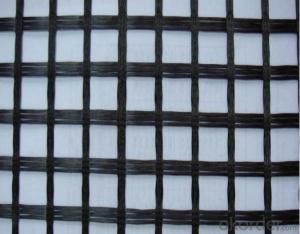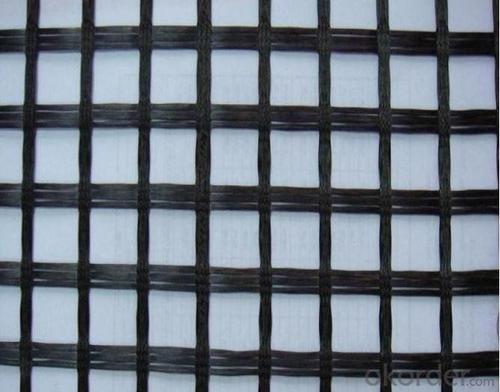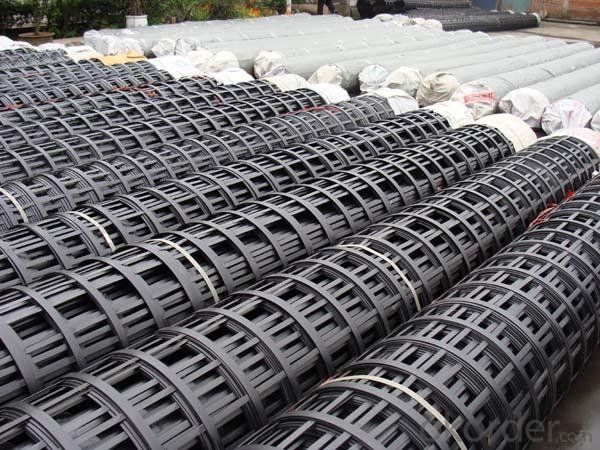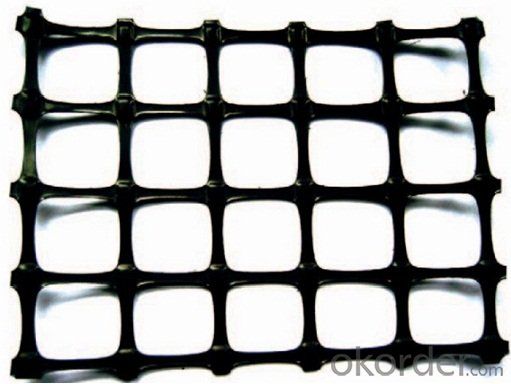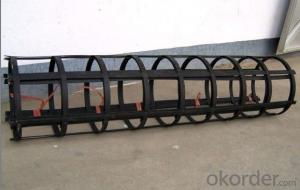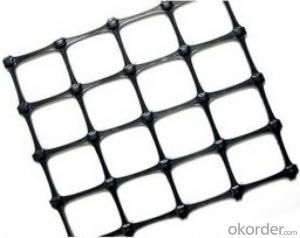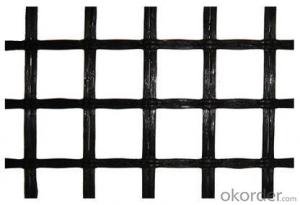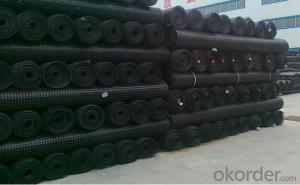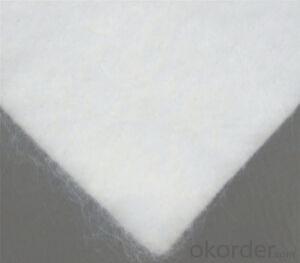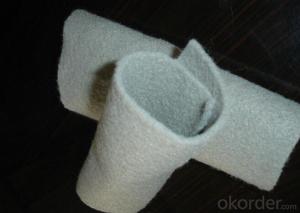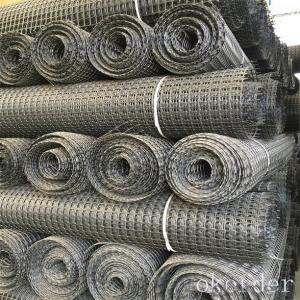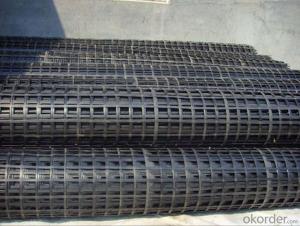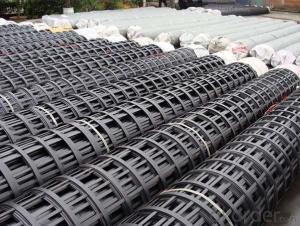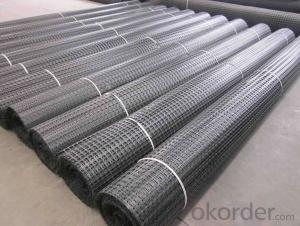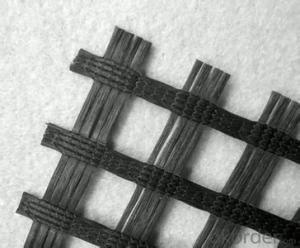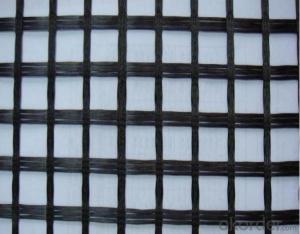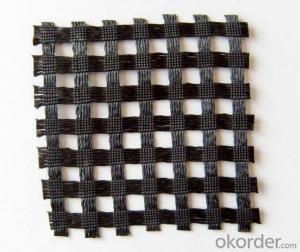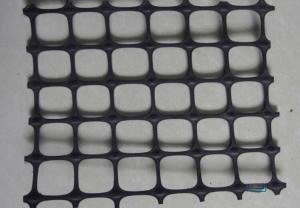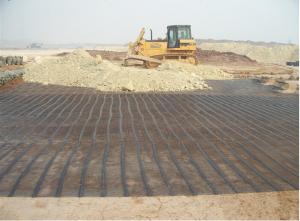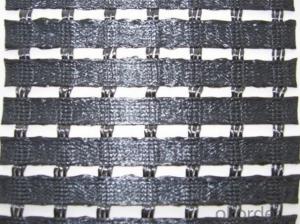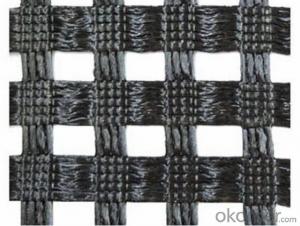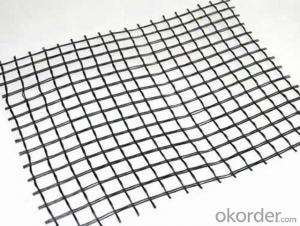High Strength PVC Coated Fiberglass Geogrids in India
- Loading Port:
- China main port
- Payment Terms:
- TT OR LC
- Min Order Qty:
- 5000 m²
- Supply Capability:
- 1000000 m²/month
OKorder Service Pledge
OKorder Financial Service
You Might Also Like
Introduction of Fiberglass Geogrid:
Fiberglass geogrid is based on fiberglass woven cloth coated with modified bitumen or PVC, it was developed to address the problem of pavement cracking on highways, roads and runways, driven by a need to reduce cost for infrastructure maintenance and repair.
It is characterized by high tensile strength in axial and lateral directions, low stretch rate, alkali-resistance, low temperature- resistance, as well as convenience in construction and low price. It can be used on pitch pavement to prevent cracks and prolong pavement service life. It also can be used as a basal reinforcement material for hillsides, reservoirs, harbors, ports, water channels, seawalls, etc.
Performance of Fiberglass Geogrid:
--- High strength, high modulus and low temperatures resistance.
Applications of Fiberglass Geogrid:
--- Reinforcement for road pavement
--- Reinforcement for railway basement
--- Reinforcement for Tunnel
--- Reinforcement for Slope
--- Reinforcement for embankment.
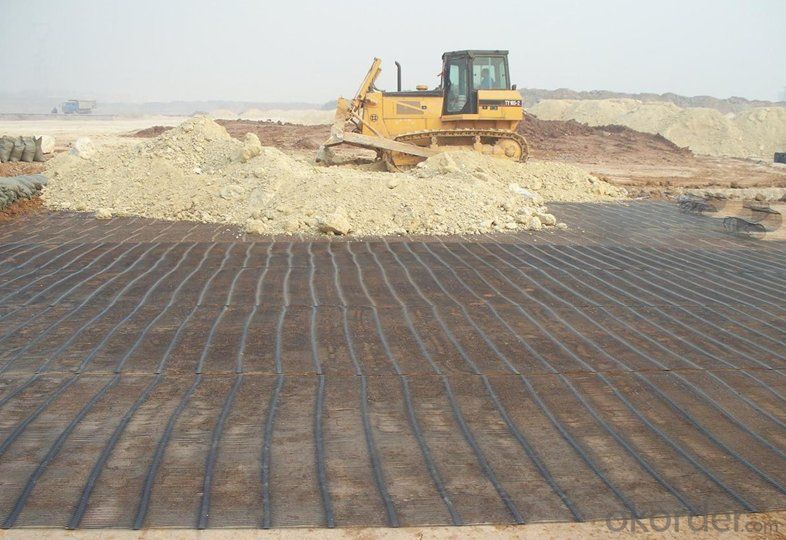
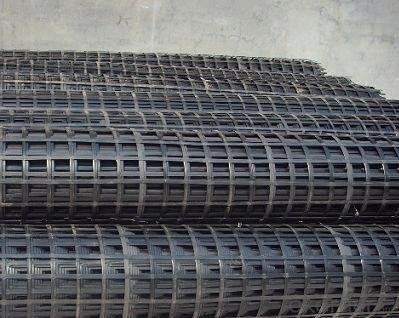
Features:
1.Intensity of vertically and horizontally from 20 KN/M to 150 KN/M
2.Low breaking elongation, not bigger than 3%
3.Suitable for each kind of soil environment
4.For treatment on surface, the rib suppresses the rough pattern, strengthens the grill surface the rough degree, enhances the GSZ steel plastic complex geogrid in the soil body friction factor.
5.It has more superior breadth, up to 2- 6 m, reducing construction joining, enhances the work efficiency.
7.Easy and convenient to install, short period and low cost- saving. It can save project cost by 10%- 50%.
FAQ:
Q: Can you accept small trial order?
A: Yes, we accept small trial orders at reasonable charge.
Q:May I get one sample for checking out the quality? How much?
A: Yes, we supply sample free of charge, and the freight will be on buyer’s account, which is refundable when order confirmed.
Q: What is your MOQ?
A: Normally, 1000 m2 per order.
Q: What is your delivery time? Can we have it sooner?
A: 2 days for sample, 3-5 days against 1x40HQ
Q: What is your payment terms?
A: T/T, Paypal (3% surcharge), Western Union or 30% deposit 70% L/C.
- Q: Can geogrids be used in reinforced concrete pavements?
- Yes, geogrids can be used in reinforced concrete pavements. Geogrids are commonly used as a reinforcement material in concrete pavements to enhance their strength, durability, and load-bearing capacity. By distributing and restraining the forces within the concrete, geogrids help to minimize cracking and improve overall pavement performance.
- Q: 0.3m drainage geogrid
- Ask a lot of questions asked to know
- Q: The difference between composite geomembrane and bentonite waterproof blanket
- Different waterproof performance. Composite geomembrane: composite geomembrane composite impermeable membrane is divided into one cloth and two membrane. Tensile, tearing resistance, bursting and other physical and mechanical properties of high index, the product has high strength, good elongation, deformation modulus, acid and alkali resistance, corrosion resistance, aging resistance, good performance of seepage control, etc..
- Q: How do geogrids help in reducing soil compaction?
- Geogrids help in reducing soil compaction by providing reinforcement and stabilization to the soil. They distribute the applied load more evenly, preventing concentrated pressure points that can lead to compaction. This allows for better load-bearing capacity, improved soil structure, and increased permeability, ultimately reducing the likelihood of soil compaction.
- Q: How do geogrids help in reducing maintenance costs?
- Geogrids help in reducing maintenance costs by providing reinforcement to the soil, increasing its stability and load-bearing capacity. This prevents the need for frequent repairs and maintenance due to soil erosion, settlement, or structural failures. Geogrids also improve drainage, reducing the accumulation of water and preventing damage to the infrastructure, thereby minimizing maintenance expenses in the long run.
- Q: Can geogrids be used in retaining walls for waterfront parks?
- Yes, geogrids can be used in retaining walls for waterfront parks. Geogrids are commonly used in retaining wall construction as they provide reinforcement and stability to the soil. In the case of waterfront parks, where the retaining walls are exposed to water and potential erosion, geogrids can help prevent soil movement, maintain the integrity of the wall, and enhance its overall durability.
- Q: What is the recommended geogrid junction spacing for specific applications?
- The recommended geogrid junction spacing for specific applications varies depending on factors such as soil conditions, load requirements, and project specifications. It is best to consult with a geotechnical engineer or refer to industry guidelines and standards to determine the appropriate geogrid junction spacing for a specific application.
- Q: What is the tensile strength of geogrids?
- The tensile strength of geogrids can vary depending on the specific type and design, but generally, it ranges from 20 to 200 kilonewtons per meter.
- Q: Can geogrids be used in landfill construction?
- Yes, geogrids can be used in landfill construction. Geogrids are commonly used as reinforcement materials in landfill engineering to improve stability, increase load-bearing capacity, and prevent soil erosion. They are effective in enhancing the overall performance and longevity of landfills.
- Q: What is the recommended overlap for geogrid installation?
- The recommended overlap for geogrid installation typically varies depending on the specific project and geogrid manufacturer's recommendations. However, in most cases, a minimum overlap of 1-2 feet (30-60 centimeters) is recommended to ensure proper connection and load distribution between adjacent geogrid panels.
Send your message to us
High Strength PVC Coated Fiberglass Geogrids in India
- Loading Port:
- China main port
- Payment Terms:
- TT OR LC
- Min Order Qty:
- 5000 m²
- Supply Capability:
- 1000000 m²/month
OKorder Service Pledge
OKorder Financial Service
Similar products
Hot products
Hot Searches
Related keywords
